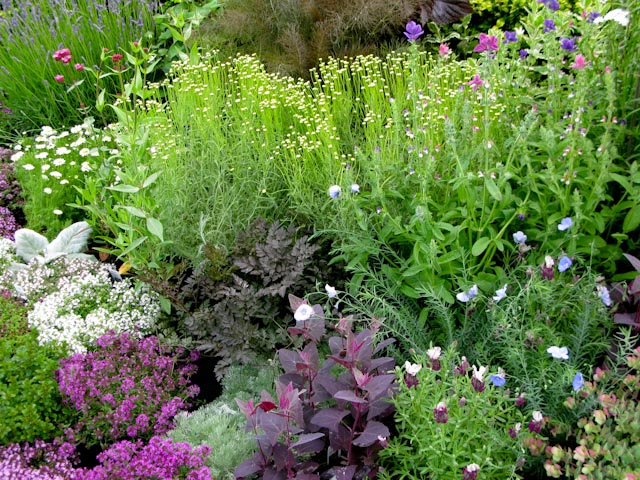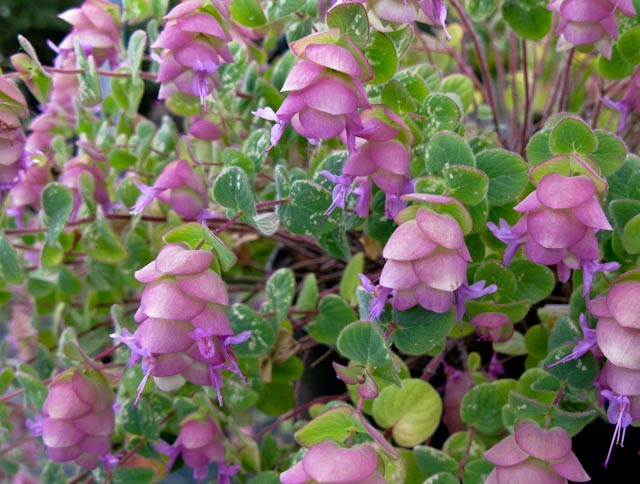I have a huge love of the Myrtaceae family and they are one of the many reasons that I started the Herboretum.
I have found that many gardeners know Myrtles but not Lumas and many are confused as to which is which. What is great about Lumas is that, whereas the Mediterranean Myrtle can be a little tender, the Chilean Luma is very hardy and has even adapted to my clay soil. Even though this year they have been crushed by snow, when everything else is taking time to recover, they are now looking lovely.

Luma apiculata ‘Glanleam Gold’ AGM
Another plus that is, similar to Myrtle, if a branch does get broken or the tips do get scorched you simply have to cut back and the new growth will come from the old wood.

Luma apiculata AGM, Chilean Myrtle
The Luma apiculata has the most attractive cinnamon bark as it matures and makes an ideal specimen evergreen plant within the herb garden.
Luma apiculata ‘Nanum’, the dwarf luma, makes an ideal low hedge as it is very slow growing, it prefers a well drained slightly acidic soil but will adapt to a well drained loam.
All Luma’s can be grown by the sea as their foliage is not damaged by salty water.
Luma chequen, is the most robust of the Luma’s. It makes and ideal tall edging, hedging plant as it can be cut hard to keep it in shape.
In the kitchen the leaves can be used to flavour soups and stews, but should be used sparingly. After flowering the Luma has a black fruit which, when cooked, makes a very interesting conserve, jelly, which is extremely good with game dishes.
At our Herb Friday on the 19th April we will be offering 20% discount on all Luma plants.























